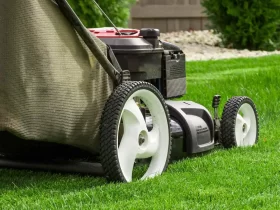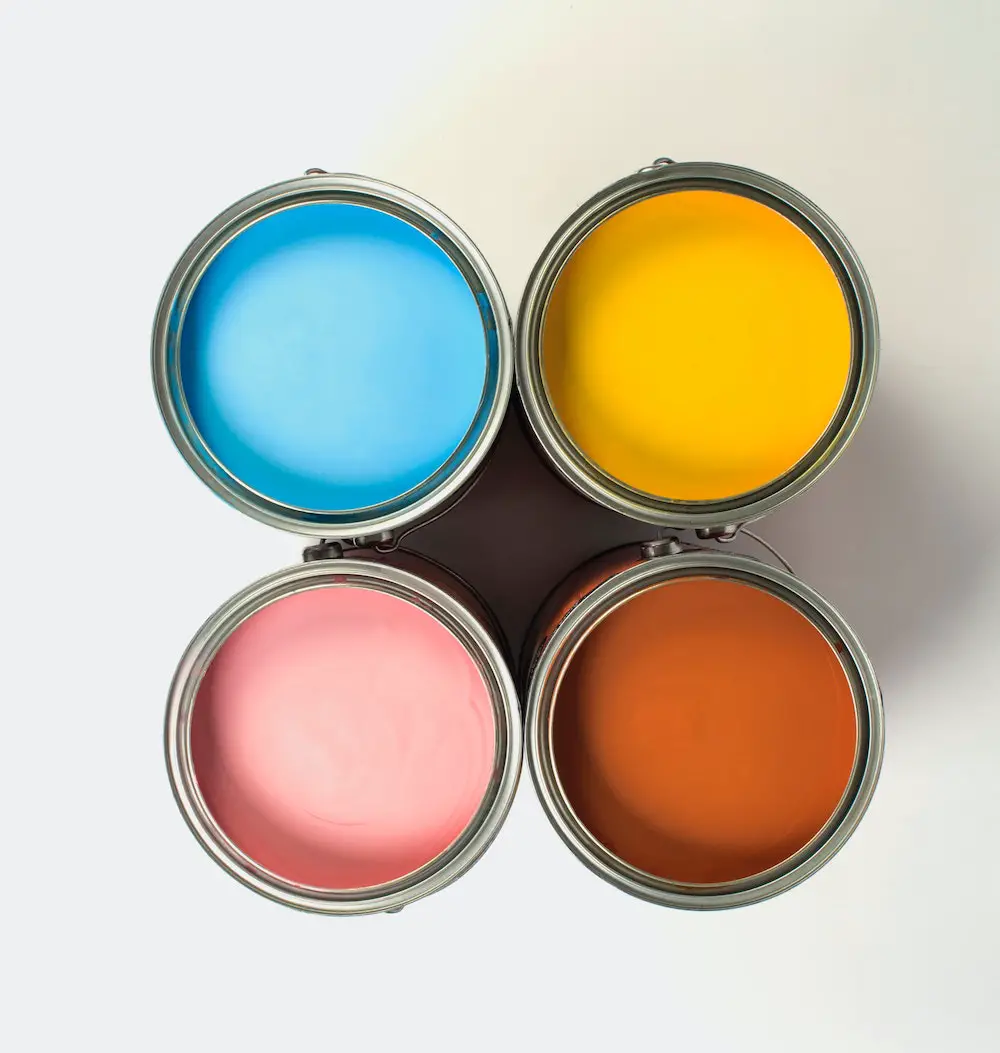When you think of sprucing up your home, how to dispose of paint is probably the last thing on your mind. Painting a room is probably much easier than buying the right amount of paint. How many times have you been left with a half-empty unused can of paint? You could either save the paint for future use or dispose of it. However, you can’t just throw paint away, so you must know the right way of how to dispose of paint, and proper paintcare is an important part of protecting the environment, and your health. Whether you’re a novice or an experienced painter, getting rid of unwanted paint can be quite the challenge. Don’t worry – in this blog post we’re going to share some tips and tricks for properly disposing of your used latex and oil-based paint so you don’t have to worry about any contaminated areas, costly clean-ups, or hazardous waste disposal issues. So grab your paintbrush and let’s get started!
Types of Paint
When disposing of paint and other unused household hazardous wastes, it’s important to understand the types of paints and coatings in order to properly and safely dispose of them and avoid the chance to contaminate soil and water. Paint types come in both water- and solvent-based varieties. The main types of paint are:
- Latex/Water-Based Paints: These are relatively easy for consumers to manage as they are not considered hazardous waste, however, still must not be poured down sewers or drains.
- Oil-Based Paints: These contain Volatile Organic Compounds (VOCs) which evaporate without leaving a residue and can harm the environment if released into the atmosphere or water system. They must be disposed of at local community acceptor sites that specialize in managing all Household Hazardous Waste materials.
- Epoxy Paints: These are used as a hard durable coating on machinery, equipment, titanium tanks, etc. and must also be disposed of at most Household Hazardous Waste acceptor sites due to their potential toxicity.
- Acrylic Paints: Painting mediums such as Odorless Mineral Spirits or Turpentine are often used with acrylic paints for diluting consistency and should also be brought to a Household Hazardous Waste Acceptance Site for proper disposal.
It is important to keep in mind that many mass retailers like Home Depot now have recycling programs available that can help you safely recycle leftover paint while ensuring they find their way back into useful products like recycled paint or new goods instead of ending up in landfills.
Storage and Handling of Paint
When using a new can of paint, carefully inspect it for signs of damage. Do not store, use or dispose of any cans with defects such as dents, bulges or punctures. Store paint in cool and dry locations away from direct sources of heat and out of reach from children, pets, and other animals.
It is important to read the specific instructions on all paint cans carefully before handling to ensure proper storage and disposal methods. Some paints are considered hazardous and require special handling both while in use and when they are discarded. To further protect yourself, use dust masks or respirators approved by OSHA when using aerosol spray cans.
Properly seal all open containers of paint before storing by fastening the cap securely over the opening without forcing it too tight so that gasses may escape safely if pressure buildup occurs inside the can. Make sure to stand the container upright to ensure more even pressure swelling inside the container if left for an extended period of time before disposal.
After use, place all opened containers upright into a lined steel drum or plastic container with a tight fitting lid for transportation and ultimate disposal at specially designated hazardous waste depots run by local cities and townships that accept these products from consumers free-of-charge!
Identifying the Disposal Options
When you’re done with a project that involved painting, disposing of the leftover paint can be a challenge. Spray paints, wood stains and oil-based paints need to be treated differently from latex paints. Here is an overview of your disposal options.
Latex Paint: Latex paint can usually be taken to your local household hazardous waste facility or disposed of in the regular trash if it has been hardened. To harden the remaining paint:
- Strain the paint and mix it with clay cat litter, sawdust or shredded paper (choose materials that have already been treated for disposal). Let sit until hardened, then throw away in garbage bags.
- If you have more than a quart of leftover latex paint, evaporation is another good choice for disposal. You should use a well-ventilated area and pour out thin layers on newspaper or cardboard until they dry into a solid form. This can take up to 24 hours but presents an effective waste management solution as well as providing reusable products like cement blocks and garden stepping stones!
Oil/Solvent-based Paints: Oil/solvent based paints must be disposed of through your county’s hazardous waste program since they can’t be placed in regular trash collectors due to their toxicity level. Before bringing them to the collection site, they must be sealed in containers that are clearly labeled with their contents and marked “Hazardous Waste Only” so that collection personnel know how to handle them properly and safely.
Disposal of Water-Based Paints
Water-based paints, such as latex and acrylic, are durable, nontoxic, and easier to clean up than oil-based paints. When it’s time to dispose of water-based paint products, the best option is to separate the liquid waste from your household trash. Generally speaking, several strategies can help you keep paint out of landfills while simultaneously increasing the potential for reuse:
- Air drying – this method works best with solidified residues. Simply spread a thin layer on clean cardboard or scrap wood outdoors in a well-ventilated area and cover with plastic wrap or a tarp. When dry, discard in your household garbage.
- Dispose at a hazardous waste facility – Nearby counties will generally accept small amounts of excess house paints for disposal as hazardous wastes which can include residue in cans as well as unusable dried paints.
- Recycle – Many states collect unused latex paint from residents through certified community drop-off locations. Contact your local county solid waste authority to inquire whether they have such a program that you can use to properly dispose of old water-based paints.
Disposal of Oil-Based Paints
Oil-based paints contain hazardous components and have to be disposed of in accordance with safety regulations. Unused or partially used paint must be stored out of reach of children and pets in its original container with a tightly fitted lid. It should be kept away from any heat sources, as this may cause the paint to react differently and make it dangerous to use. A hazardous waste collection facility will treat the waste product safely.
The best way to dispose of oil-based paint is through a household hazardous waste collection program. This can usually be found at your local recycling center, with some types of paint allowed for small quantities without a fee. Before disposing, drains, sinks or any water sources should not be used as these will contaminate fountains or waterways which may affect wildlife in the area.
For larger amounts, oil-based paints can also take advantage of painting contractors’ services which include pick-up and disposal options. Alternatively, empty cans may also be left in your regular curbside trash if all liquids have been removed by allowing the can to sit open overnight before sealing it shut. Unfortunately oil based paints are not recyclable so caution is necessary when disposing it properly for safety reasons.
Disposal of Aerosol Paints
Aerosol paint cans must be completely empty to be considered safe for disposal. Empty aerosol cans may be disposed of in a regular trash receptacle as long as the can is fully dry and does not contain any hazardous components. If there is potentially hazardous material present, such as oil-based paints, primers, or coatings, dispose of the aerosol can at a local household hazardous waste facility that accepts aerosol cans for disposal. Check with your local recycling center to find out if they accept empty aerosol paint cans.
When disposing of an aerosol can in the garbage, you must make sure that it is empty and dry before placing it into the trash receptacle. To empty an existing aerosol can:
- Make sure that you are working in a well-ventilated area so that fumes do not accumulate.
- Position the can perpendicular to the ground and place it on top of sheet of cardboard or newspaper outdoors or in a garage or basement.
- Push down on the nozzle to release any remaining paint until only air is released from the can. Wait several minutes until all contents have been evacuated from the container before proceeding with disposal.
- Label and tape off any holes in order to prevent further use, using electrical tape or duct tape on all openings (nozzle hole and side hole).
- Place can in a clear plastic bag and tie knot off closure securely before throwing away in regular trash receptacle.
How to dispose of paint – proper paint disposal of latex paint and oil-based paint
Depending on the type of paint, you may need to use different ways of disposing paint. Essentially, there are two types of paints – water-based latex paint and oil-based alkyd paints. Here’s how you may dispose of them:
- Water-based latex paint
Before you discard water-based latex paint, remember to dry it off completely. You can add kitty litter or newspaper to the paint to speed up the drying process. If it is just a small amount of paint at the bottom of the can, you can just leave it out in the sun to dry.
If you have a large amount of latex paint that you need to dispose of, you may need to purchase a paint hardener. Paint hardeners are quite easily available at home improvement stores and online. However, before you dispose of your latex paint, check your city regulations. Some municipalities may accept dried latex paint for curbside pickup, while others may not.
- Oil-based paint
Oil-based paints should never be thrown in the trash and must only be disposed of at the household hazardous waste facility. Many cities hold local household hazardous waste drop-off events annually. You may take advantage of such an event to dispose of your oil-based paint.
To dispose of your leftover paint, you can check your nearest drop-off sites here.
What are some other ways to dispose of paint properly? Donate or Recycle whenever possible
Instead of disposing paint, donating it to families or charities can be a great way of putting it to use. If you have bought more paint than you require, consider donating the leftover paint to those in need.
Paint can not just be used to spruce up a home or outdoors, but also can protect surfaces from rust, mold, or other hazards.
You can donate your paint to several organizations like:
Habitat for Humanity is a global non-profit organization that works in the US and 70 other countries of the world. The organization operates several independently owned reuse stores that accept donations and sell home improvement items at a fraction of the original price. The paint you donate to Habitat for Humanity would be sold at a much lower price, allowing even those on a tight budget to brighten up their homes.
Global Paint for Charity is the largest sustainable paint waste management organization in the world. It provides latex paint to communities in need all around the world. The paint you donate to this organization will be donated to struggling homes, schools, hospitals, and other organizations in need around the world.
- Drama clubs
Many drama clubs have very tight budgets but big ideas. Members of such drama clubs often scrimp and save for their plays and musicals, but buying paint to dress up their sets can be expensive. When you donate your leftover paint to high school or community drama clubs, you give them the freedom to paint their sets with abandon.
- Homeless shelters
Homeless shelters often run short of resources for basic amenities that they do not have the time to worry about buying paint. You can donate your leftover can of paint to your nearest shelter so that they can brighten up the place. You can put your paint to good use instead of letting it sit on your garage shelf.
- Scouting Groups
Scouting groups work on many community projects, and often, they buy things out of their own pocket. The paint you donate could be very helpful in one of their community projects where they paint a needy’s home or a park bench. What may be a waste for you could be a boon for someone else.
- Charities for children
Many charities that work for children would be happy to accept your paint donation for craft projects.
When should you consider disposing paint? Throw away paint responsibly
When paint goes bad, you need to know the right way of disposing of paint safely and responsibly. Paint, whether it is water-based latex paint or oil-based paint, typically has a long shelf life. They can easily last up to 10 to 15 years if kept well sealed with minimum temperature fluctuation in the storage area. Despite storing paint the right way, there may be times when paint can go bad.
Here’s how you can know if your paint has gone bad:
- You have had it for a very long time.
If you have held on to that can of paint for more than a decade, the chances are that it has gone bad. Water-based paint lasts for about 10 years, while oil or solvent-based paints last longer, around 15 years, provided the cans have been properly sealed. If your can of paint has been around for longer, you may need to think about how to dispose of paint.
- Your paint smells offensive.
You may smell your latex paint to find out if it has gone bad. If it emits an offensive, pungent smell instead of the typical paint smell, it has gone bad.
- Your paint has hardened or become rubbery.
Another way to find out if the paint has gone bad is by stirring it. If it is hard on the bottom or on the sides of the can after stirring, it has gone bad. You can even try painting on a small surface, and if it begins to peel off, you need to think of how to dispose of paint. You may also need to think about disposal if your paint looks thick or rubbery in appearance.
Conclusion – throw away and get rid of old paint
Even after planning well, there may be several occasions when you are left with some amount of unused paint. If you ensure that you have properly stored leftover paint, you can always use it in your future projects while saving money; however, if you must dispose of it, go through the above points on how to dispose of paint before discarding your leftover paint. Donating your paint is always a good way to brighten up the homes of the less fortunate.
Ultimately, the best advice for paint disposal is to responsibly use, reuse, and recycle all leftover paint whenever possible. If you find yourself with no other choice but to dispose of paint in a landfill, ensure that you do so properly by following all applicable laws and regulations. Safely disposing of paint is a key way to protect our environment. By taking proper precautions and disposing of hazardous material correctly and legally, we can reduce the environmental impact that non-biodegradable waste has on our planet.
For more great tips and ideas to make your life easier, check out more DIY and Lifestyle articles at TAG Level, or subscribe and get notified of all the latest inspirations and ideas we follow at TAG Level!.































Leave a Reply